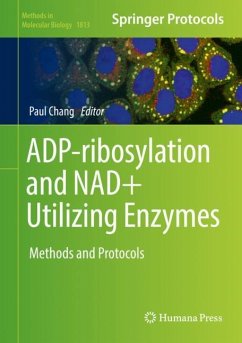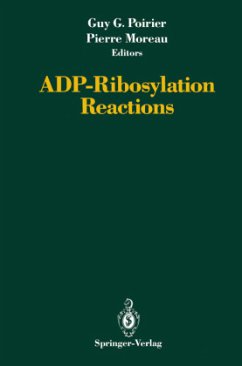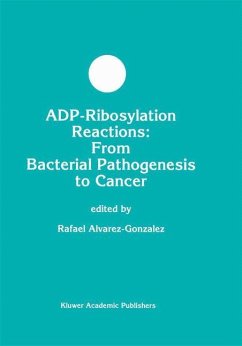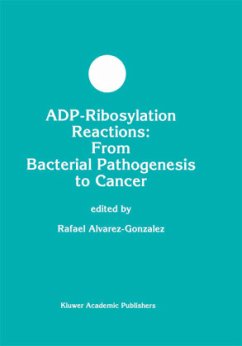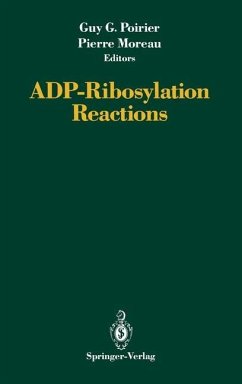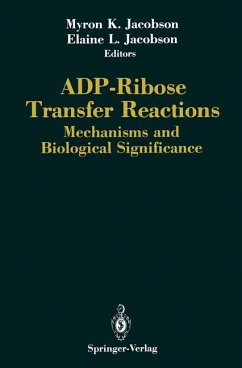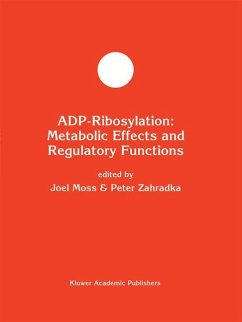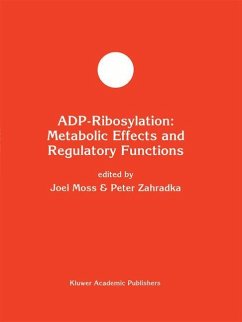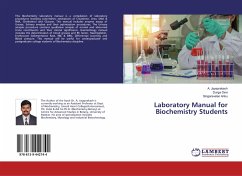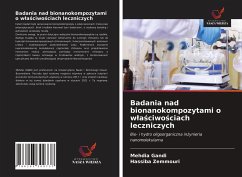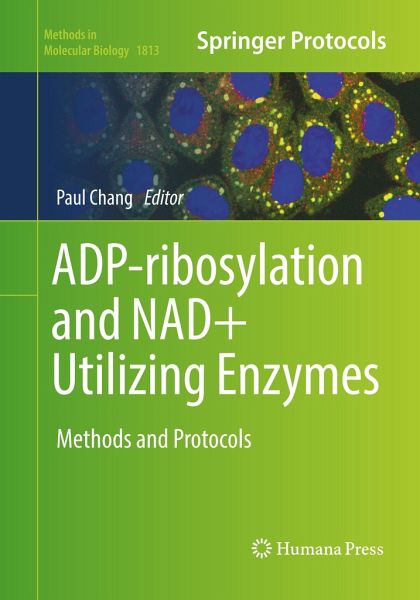
ADP-ribosylation and NAD+ Utilizing Enzymes
Methods and Protocols
Herausgegeben: Chang, Paul
Versandkostenfrei!
Versandfertig in 6-10 Tagen
83,99 €
inkl. MwSt.

PAYBACK Punkte
42 °P sammeln!
This volume focuses on mono-ADP-ribosylation and enzymes that use NAD+ including Sirtuins, PARPs, and bacterial and eukaryotic ADP-ribosyltransferases. The chapters in this book are organized into eight parts, and offer detailed descriptions of key protocols used to study topics such as in vitro techniques for ADP-ribosylation substrate identification; biochemical and biophysical assays of PAR-WWE domain interactions; monitoring expression and enzyme activity of ecto-ARTCs; HPLC-based enzymes assays for Sirtuins; and identifying target RNAs of PARPs. Written in the highly successful Methods in...
This volume focuses on mono-ADP-ribosylation and enzymes that use NAD+ including Sirtuins, PARPs, and bacterial and eukaryotic ADP-ribosyltransferases. The chapters in this book are organized into eight parts, and offer detailed descriptions of key protocols used to study topics such as in vitro techniques for ADP-ribosylation substrate identification; biochemical and biophysical assays of PAR-WWE domain interactions; monitoring expression and enzyme activity of ecto-ARTCs; HPLC-based enzymes assays for Sirtuins; and identifying target RNAs of PARPs. Written in the highly successful Methods in Molecular Biology series format, chapters include introductions to their respective topics, lists of the necessary materials and reagents, step-by-step, readily reproducible laboratory protocols, and tips on troubleshooting and avoiding known pitfalls.
Cutting-edge and thorough, ADP-ribosylation and NAD+ Utilizing Enzymes: Methods and Protocols is a valuable resource for anyone interested in this developing and expanding field.
Cutting-edge and thorough, ADP-ribosylation and NAD+ Utilizing Enzymes: Methods and Protocols is a valuable resource for anyone interested in this developing and expanding field.



